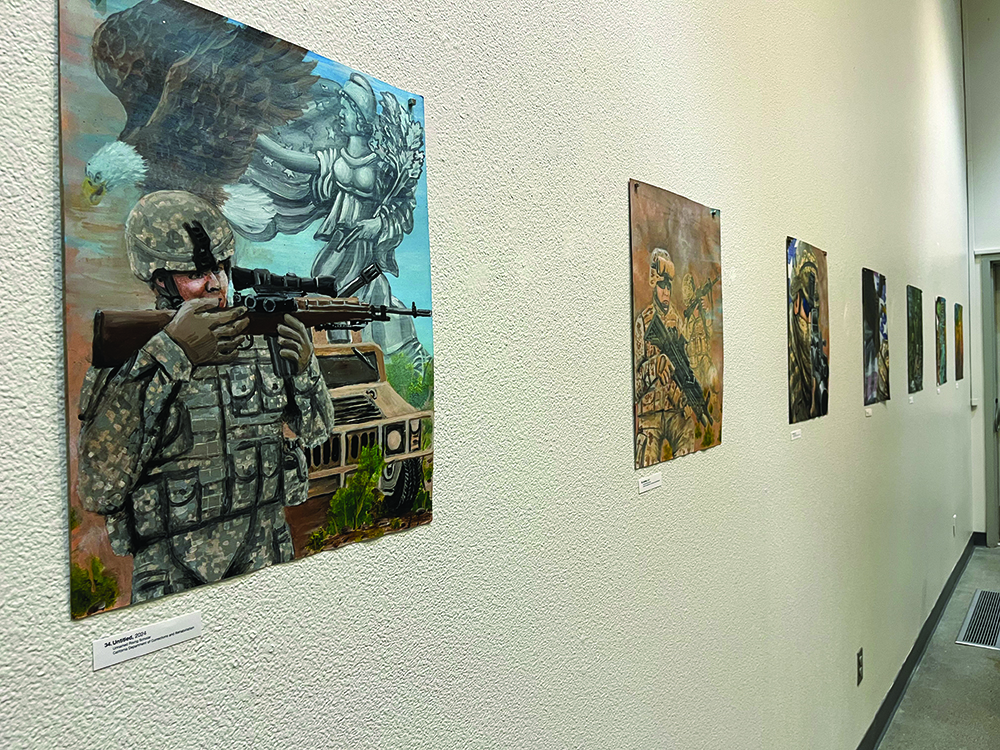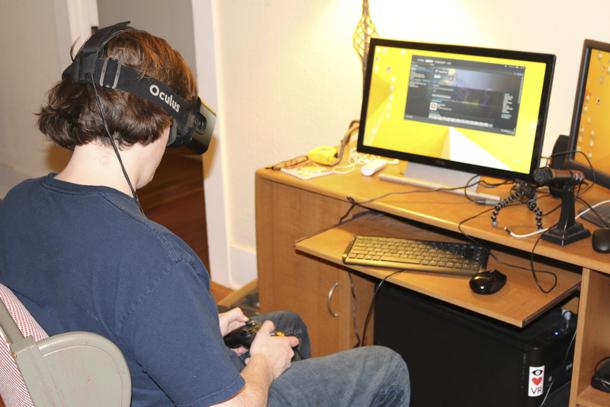Imagine the world you live in is replaced with an alternate reality. One where anything is possible and nothing is as it seems.
What was once considered to be science fiction when we were younger is now becoming a true possibility, if not a probability.
Virtual Reality, or VR, is a computer-simulated environment created by computer programs and presented on digital displays. The main goal of VR is to create life-like experiences by incorporating user interaction, immersion, and presence into the content so that one day, we are able to do just about anything we can imagine and have it feel as close to “real” as possible.
Although VR has had its ups and downs since its consumer launch in the early-mid ’90s, it is finally stepping into its prime as we are being introduced to the most powerful, technically advanced VR systems ever created in this day and age.
Through thousands of hours of work and dedication, and with the help of crowd sourcing, a man named Palmer Luckey, in 2012, created a new, highly advanced head-mounted VR display, called the Oculus Rift. Since it’s spawn, it has brought VR back into the multimedia spotlight and has opened up new doors and avenues for both software developers and engineers alike.
In 2014, after being acquired by Facebook for over $2 billion, the Oculus Rift became the next big thing in emerging technology.
Already, Microsoft and Google, as well as other major competitors, have jumped on the bandwagon and have started developing their own VR equipment that will be compatible with their own products.
Much like there have been videogame console wars in the past, this will be the first type of war for VR equipment since the mid ’90s.
Even outside of the professional world of VR, many individuals have become hardcore VR enthusiasts.
Ian Hamilton, a journalist by trade, is a VR enthusiast who has been following this movement for sometime now. Hamilton got interested a while back when he was a technology reporter for the Orange County Register and was introduced to the Oculus Rift developer’s kit by a friend.
After having a first-hand experience with the prototype headset, he was turned on to purchase his own developer’s kit, which fueled his newly found interest in VR.
Since his purchase of the Oculus Rift developer’s kit 2, he has started a blog dedicated to VR news and updates, and has even started to develop his own VR content.
Now many people believe that VR is going to change the world forever, and that may very well be true, however there is a lot to consider.
“It’s hard to gauge how quickly VR will become influential,” Hamilton said. “Society will be fundamentally different when space doesn’t separate us, and you can go to any world you can imagine.”
There is also much to be said about the effects it will have on the human mind and whether or not it could potentially have negative effects on our mental health.
“It’s not going to be for everyone,” he said. “I’d think people who don’t have a solid grip on what’s real to begin with and those who don’t like this world anyway, might have problems handling alternate realities too.”
It may never get to that point unless the experience becomes fully immersive and as of now, there is a lot that stops it from being just that.
Where the Oculus Rift relies heavily on head tracking to give the user that feeling of immersion, it still hasn’t gotten to the point of incorporating full body sensors to capture movements of the arms and legs.
Some of Rift’s competitors including Microsoft’s HoloLens and Google’s Magic Leap, which are also still in development, are focusing on a different type of technology to pierce through the world of VR.
Augmented reality takes a real-world environment and augments it by using computer-generated sensory input such as audio or video.
Since this technology isn’t replacing the real world with a fake one, it won’t rely on sensors to track body movement for a virtual character.
It will instead allow the user to experience the augmented reality, while still being able to see their bodies and interact with the environment in real time.
When the time comes for consumers to choose a product, there will be a lot of variety in the type of VR headsets that will be available.
“There are mobile VR setups like Gear VR and Google Cardboard, desktop VR systems like Vive and Rift, as well as console VR like the Morpheus,” said Hamilton.
What consumers should keep in mind, is whether or not how powerful the device is, will outweigh the price and mobility of the unit.
“Desktop VR is where all the excitement is right now because of the powerful sense of presence that can be produced using the highest end graphics cards inside desktop gaming PCs.” He said.
“Mobile VR is so much more convenient though, because it’s less expensive, wireless and you can get into bed or get on a plane to use it. But because mobile VR relies on a fully functioning cell phone, there are weight and heat limits to how powerful it can be.”
There is so much potential for this technology in more than just gaming and entertainment.
Hamilton explained, “Education could be enormous. Every person could learn any subject from the best teachers in the world.”
Facebook even plans on taking social networking to the next level with the Oculus Rift. In the future, we may experience Facebook in a completely different way.
“Social VR would be even bigger,” Hamilton said. “You could meet with anyone you want, to do anything you want, anytime you want.”
At the end of the day, though, this is all speculation. All of these companies have now, are beta versions of what will hopefully be everything they aim to be, revolutionary. “The next five years are going to be about improving software and hardware so prices come down for consumers, while the capabilities improve, to bring more of who you are, into VR,” said Hamilton.
If VR enthusiasts like Hamilton are interested in experiencing what these headsets have to offer in their early stages, development kits and beta versions are available. However, the consumer versions of these products will be vastly different in quality, appearance, and content.
“The devices out now are not ready for consumers yet. Wait for the consumer version unless you want to invest a fair amount of money and time to learn how to make VR experiences yourself with the tools that are available,” Hamilton explains.
More information and news on VR can be found at Ian Hamilton’s blog http://ianhamilton.net or by simply searching for Virtual Reality on Google.





